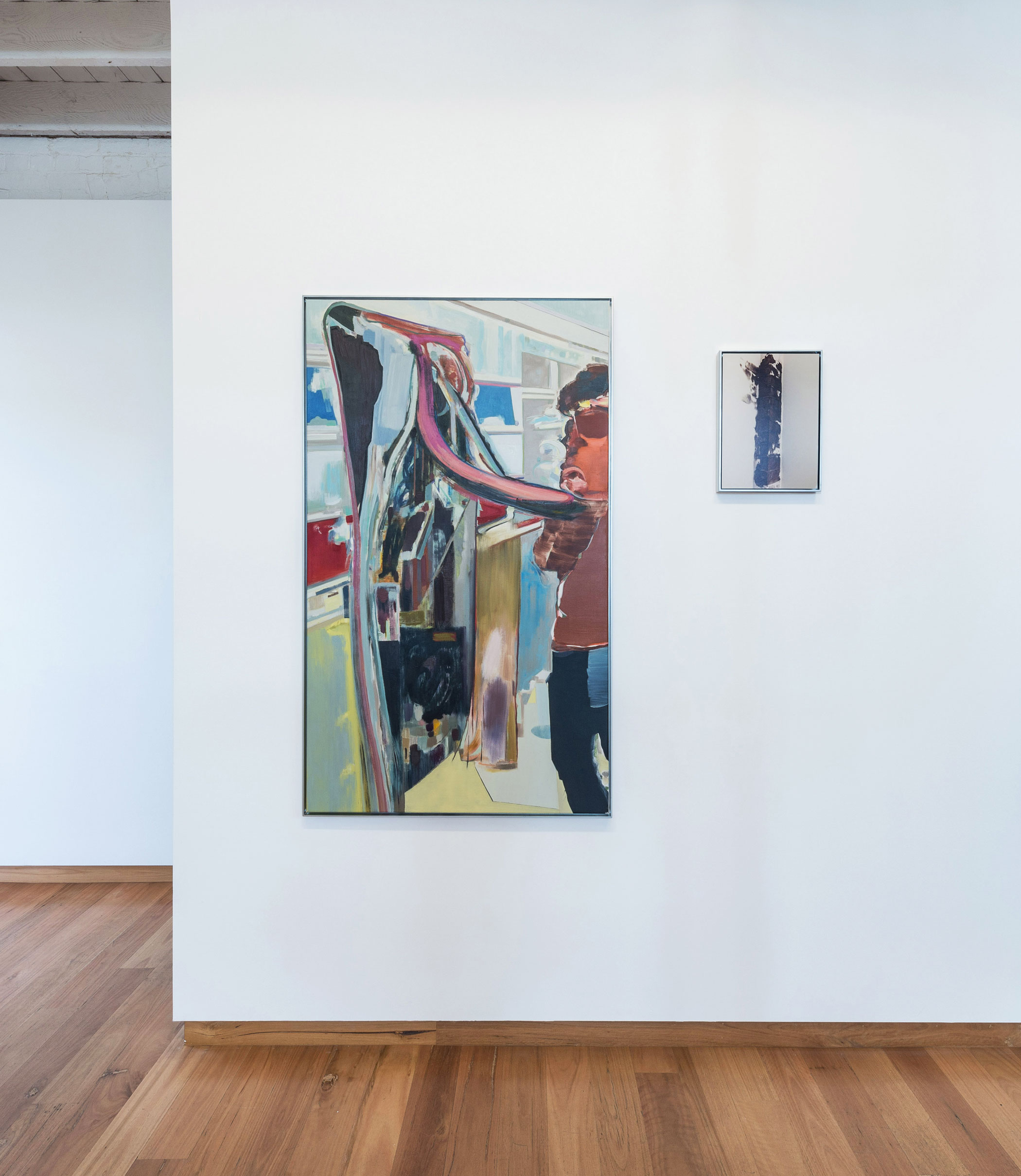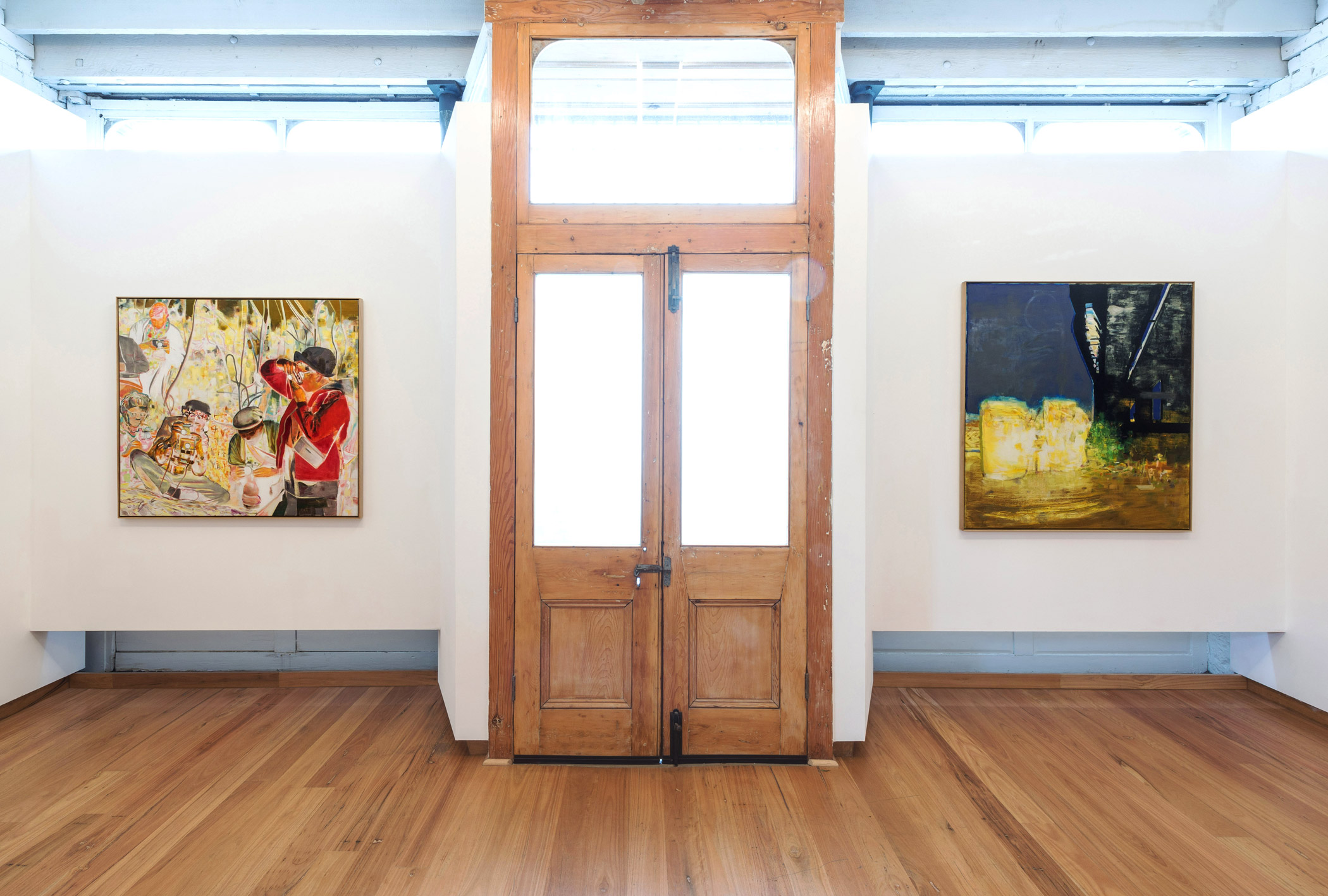Afterall, 2017
NKN Gallery, Melbourne, Australia








Peter Westwood presents the world as we think we know it. But, like reality itself, the images are mysterious – simultaneously ‘formed’ yet unformed.
Their painted spaces are ambiguous; their ‘facts’ are unreliable and mutable; their psychology erratic. Forms, once-recognised, are filtered through the ‘laws’ of abstraction so that imagery sometimes becomes non-imagery, half-imagined. Elsewhere, suggestive images emerge, barely formed, which become something else, even as we think we have located them. The paintings have a variety of possible readings and the images both ‘are’ and ‘are not’ - like the hypnogogic images we experience on the verge of dreaming, which endlessly change and switch as we regard them.
In a sense, the paintings can be viewed as a kind of social document – but a social document which is not assertive. On one level, the subject matter is about society and our place within it. But these are no mere illustrative, figurative narratives. The ‘stories’ they tell are about how things play out, perpetually, in endless permutations. There are no solutions, only manifestations of events and situations. The paintings are also about the history of themselves and their making, in the artist’s studio.
Westwood works from found images, but, apart from image-choice and selection, he does not plan the paintings before embarking on them. The paintings evolve through their making. They are allowed to grow and coalesce through chance placement and a kind of psychological, stream-of-consciousness process that allows suggestive connections to flourish between figuration and abstraction.
The pictorial spaces in the paintings are also ambiguous - sometimes deep space is suggested around the forms, and sometimes shallower space flattens into abstraction. Westwood states: “The body of the painting is as important as the image. Everything is unstable. There is only a perpetual question.” The foreground of the painting, New Order, shows the aftermath of some kind of a crash, now fragmented into an abstract arrangement of painterly swipes and dabs. People mill about in the background, also dissolving into gobbets of abstract painted marks. We ‘know’ the scene, but also don’t know. The ‘real’ moment has been transmuted into an imagined abstract invention whose ‘authenticity’ is as valid as a photograph.
Their painted spaces are ambiguous; their ‘facts’ are unreliable and mutable; their psychology erratic. Forms, once-recognised, are filtered through the ‘laws’ of abstraction so that imagery sometimes becomes non-imagery, half-imagined. Elsewhere, suggestive images emerge, barely formed, which become something else, even as we think we have located them. The paintings have a variety of possible readings and the images both ‘are’ and ‘are not’ - like the hypnogogic images we experience on the verge of dreaming, which endlessly change and switch as we regard them.
In a sense, the paintings can be viewed as a kind of social document – but a social document which is not assertive. On one level, the subject matter is about society and our place within it. But these are no mere illustrative, figurative narratives. The ‘stories’ they tell are about how things play out, perpetually, in endless permutations. There are no solutions, only manifestations of events and situations. The paintings are also about the history of themselves and their making, in the artist’s studio.
Westwood works from found images, but, apart from image-choice and selection, he does not plan the paintings before embarking on them. The paintings evolve through their making. They are allowed to grow and coalesce through chance placement and a kind of psychological, stream-of-consciousness process that allows suggestive connections to flourish between figuration and abstraction.
The pictorial spaces in the paintings are also ambiguous - sometimes deep space is suggested around the forms, and sometimes shallower space flattens into abstraction. Westwood states: “The body of the painting is as important as the image. Everything is unstable. There is only a perpetual question.” The foreground of the painting, New Order, shows the aftermath of some kind of a crash, now fragmented into an abstract arrangement of painterly swipes and dabs. People mill about in the background, also dissolving into gobbets of abstract painted marks. We ‘know’ the scene, but also don’t know. The ‘real’ moment has been transmuted into an imagined abstract invention whose ‘authenticity’ is as valid as a photograph.

fig 1. Installation view

fig 2. Installation view

fig 3. Installation view
In an enigmatic night time painting, Bags of Light, glowing forms sit under what is possibly an overpass. The image triggers a host of potential ‘narratives’, all of which may be ‘true’, or potentially ‘false’. And in the work titled Birdshead World, an iconic figure, again ambiguous, is depicted, perhaps conveying a religious moral imperative, even though it is now faceless - an unknown ‘other’ adjudicator. The bird head form beside the central figure suggests an atavistic or even pantheistism overview, which predates modern religious proscriptions. Equally, as with the other works, Caught Up also forms as a work of multiple perceptions, presenting a figure who seems to be shoring up some form of material tumbling from an open doorway – or perhaps the figure is dismantling the structure. Or perhaps the figure is being drawn to the various materials and forms, grappling with the multitude of possibilities. The suggested pictorial possibilities or multiplicities of these works are perpetual and unceasing, reinforcing ideas of living within increasingly uncanny and capricious times.
Steve Cox, 2019